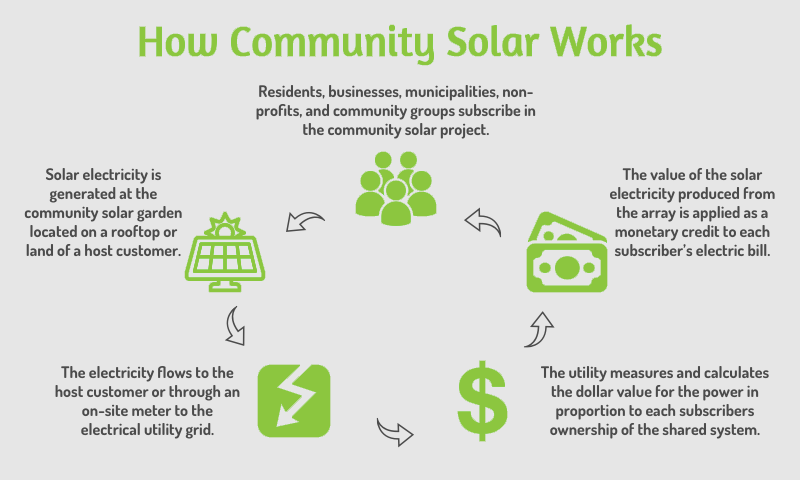2020 Community Solar UPDATE
Community Solar was first created in Illinois through the 2016 Future Energy Jobs Act, and we first wrote about it in February 2018. In 2019, over 900 potential projects competed in a highly competitive lottery to receive the state credits available for Community Solar and 112 were selected. Many of those projects are now under construction and are on a timeline to be energized by early 2021. With construction underway, many companies are beginning to sign-up subscribers, so they’ll be ready to pass on the benefits right from the beginning.
Citizens Utility Board has shared reviews of companies offering Community Solar subscriptions including this overview and side-by-side comparison of NEXAMP and Clearway’s offers. You can also learn why Arcadia’s recent advertisements of community solar are not true community solar offerings.
Through Illinois’ Solar For All program, there are also low-income community solar opportunities for qualified low-income households. To learn more and see if you are eligible, visit the Solar For All website here.
Despite the great interest from businesses in building Community Solar projects and the projected interest from subscribers, the opportunity for additional projects in Illinois has stalled due to inadequate funding for renewable energy. The proposed Clean Energy Jobs Act (CEJA) would unlock new resources for funding renewables, including Community Solar, without placing additional burdens on consumers.
Is It Right For You?
(February 7, 2018): Illinois’ Future Energy Jobs Act (FEJA) created a brand new program, called “Community Solar,” that expands access to solar energy. Since the act’s passage in December 2016, citizens, businesses, and community groups have been anxiously waiting for the opportunity to make their Community Solar project a reality. That time is finally here. The Illinois Power Agency (IPA) is expected to receive approval of their plan finalizing FEJA’s programs in early April.
Let’s explore what Community Solar is and what you can do now to begin to take advantage of this new program.

What is Community Solar?
“Community Solar” allows community members who may not have an opportunity for a solar project on their property, such as renters and those with shaded roofs or limited incomes, to come together as subscribers in an off-site Community Solar project (i.e. Community Solar Farm, Community Solar Garden).
A Community Solar Garden may be sited on rooftops of “host customers,” such as community centers/buildings, churches, schools, malls, apartment buildings, or on remote offsite land. The energy from the panels is used to power the host customer or fed directly to the grid.
At least three off-site subscribers are required to buy or lease a share of the installation. Through a process called “virtual net metering,” the subscribers receive a monetary credit, based on their level of participation, on their electric bill for the energy produced by the panels.
Community Solar Quick Facts
- At least three subscribers are required
- No subscriber may own or lease more than 40% of a project
- Maximum project size is 2 Megawatts (MW) (enough power for about 320 homes)
- Minimum subscription size per customer is 200 watts (or about one solar panel)
- Subscribers must be located in the same utility territory as the project
- If you move within the same utility territory you can take your subscription with you
- If you move outside the utility territory you may sell or transfer your subscription
- The Illinois Commerce Commission and the Illinois Power Agency (IPA) have to approve any community solar project
- Additional funding and incentives are available through FEJA’s “Solar for All” for projects that serve low-income subscribers and communities
Learn More
The Illinois Solar Energy Association’s Community Solar PowerPoint Presentation and list of community solar developers in Illinois
Citizens’ Utility Board Community Solar Fact Sheet
Environmental Law and Policy Center’s Community Solar Fact Sheet







